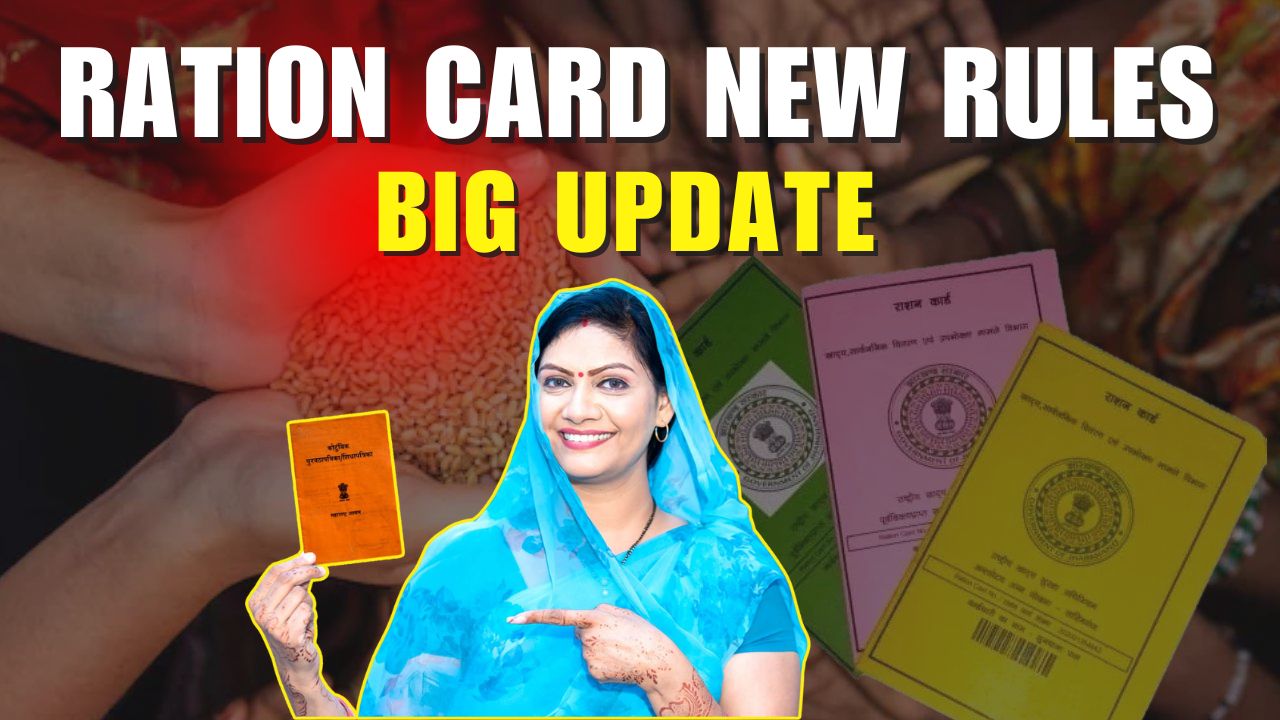Starting May 15, 2025, the Indian government is introducing sweeping reforms to the ration card system. These changes are part of a broader digital transformation in the country’s welfare distribution network, aimed at improving transparency, efficiency, and inclusiveness. The updated rules will significantly impact how beneficiaries access essential subsidies related to food grains, LPG gas, and direct bank transfers.
Mandatory e-KYC Becomes a Game Changer
One of the most significant updates is the mandatory implementation of electronic Know Your Customer (e-KYC) verification linked to Aadhaar. All ration cardholders will now be required to complete their e-KYC to continue receiving benefits. This change is aimed at eliminating duplication, fraud, and misuse of the Public Distribution System (PDS). Households that fail to complete e-KYC before the deadline could see their benefits paused or permanently revoked.
Officials stated that this move will also improve targeting of schemes by ensuring that only genuine and eligible families continue to receive government subsidies. The integration with Aadhaar will allow real-time verification, which minimizes paperwork and human error.
LPG Subsidies Now Delivered Directly to Bank Accounts
Another major shift is in the way LPG subsidies are disbursed. Going forward, the subsidy for cooking gas will be transferred directly to the bank accounts of ration card-linked households. This Direct Benefit Transfer (DBT) system eliminates delays and reduces the risk of leakage through middlemen.
Households enrolled under the Pradhan Mantri Ujjwala Yojana or those availing subsidized LPG connections will particularly benefit, as the transition to DBT ensures timely credit and allows users to purchase cylinders at full cost, with the subsidy reimbursed within days.
₹1,000 Incentive for e-KYC Compliant Users
To encourage timely compliance with the new e-KYC rule, the government has also announced a ₹1,000 one-time assistance for ration cardholders who complete the Aadhaar authentication process before the May 15 deadline. This incentive is aimed at supporting low-income families in the short term, especially those who might face disruptions during the transition.
The financial aid will be transferred directly into linked bank accounts, without the need for separate applications. Authorities believe this will not only serve as a reward for compliance but also offer immediate relief to economically vulnerable groups.
Crackdown on Fake Ration Cards Through Digitization
As part of the overhaul, the government has intensified its efforts to clean up the ration card database. Over 5.8 crore fake or duplicate ration cards have already been deactivated across states through digitization drives and Aadhaar linkage. These steps are seen as essential to plug revenue leaks in welfare schemes and ensure public funds are used effectively.
With these changes, every active ration card will now be traceable and accountable. State-level departments have also been instructed to integrate biometric systems at ration shops to ensure smooth and secure distribution of food grains.
Enhanced Transparency and Efficiency in PDS
The broader goal behind these reforms is to transform the Public Distribution System into a more transparent, accessible, and technology-driven service. The government is also exploring the integration of ration cards with mobile apps and unified digital ID systems to further streamline access.
Beneficiaries will soon be able to check their entitlements, subsidy status, and ration stock availability from their phones, reducing the need for physical visits and intermediaries. These changes are especially important in the post-COVID era, where digital access has become critical for reaching rural and remote populations without delay.
What You Should Do Before May 15
All existing ration cardholders are advised to complete the e-KYC process as soon as possible. This can be done through your nearest ration shop, common service center (CSC), or online via the state PDS portal. Those who delay may face temporary disruptions in gas subsidies, ration supplies, or financial benefits.
Banks have also been instructed to assist customers in linking their ration cards and Aadhaar numbers with active savings accounts to facilitate DBT under the new framework.
Conclusion: A Shift Towards Smarter Welfare Delivery
The overhaul of ration card rules from May 15 marks a major step toward a more accountable and citizen-friendly welfare system in India. By linking ration, gas, and banking benefits under one unified digital framework, the government hopes to empower genuine beneficiaries while removing inefficiencies and corruption. For millions of families dependent on these schemes, this is both a challenge and an opportunity to embrace a more transparent, tech-enabled future.




